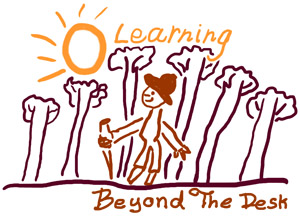So, you are ready to leave the curriculum behind? Or, maybe you are just entertaining the notion of it, but you are afraid of stepping off that well-known platform. At this point, you have heard the why’s of ditching the curriculum and most likely a host of arguments on both sides (here’s one for child-centered learning), so what we’d like to focus on is the how. For some, this is a natural process and we can so simply say “just follow the interests of the child” and off you go! That’s not fair though to the majority of parents who may be struggling to understand what their child(ren) are interested in or how on earth you should use that interest to foster learning. Hopefully if you are in the latter category, this guide will help you along that journey!
Step 1: Detox
This step is for parents taking their children out of schools. You can read more Detox here. As you read in the article, this process is as much for the parent as it is the child. It is a very important step for all of you to let go of the industrial age idea of what constitutes “education.” The detox period allows you to step back and away from these mandates and to remember how learning actually happens. This is the time that you begin to truly discover what your child is interested in. For parents of children who are not in school as you approach the kindergarten age, don’t go pulling out the worksheets and kindergarten learning curriculum. Simply let them play! They can play imaginative games on their own and learning games with you. Read to them and use every moment as a learning moment. Do not force them to start learning letters and reading unless they show you they are ready. But never stop engaging with them. Read some natural parenting and montessori material to help you understand and appreciate the incredible importance of childhood play.
Step 2: Finding their interests
Child-centered learning means you let the student/child lead their learning based on their interests. By doing this, the child tends to dig deeper and go further. Not only this, connections are made to other, related topics. One of the best things about this style of learning is that this is the methodology that all humans begin with and then continue with after the “formal schooling” is over.
Engaging the young child
So, how does a parent go about this? As a parent of a young child, this process is very easy. Young children are fascinated by many things. At this stage you encourage their questions and help them find the answers. You read to them, explore with them, play with them. They will show you the way.
Finding the interests of the older child
For many parents whose children are older and have been in school (or studying strict curricula under a school-like atmosphere) this process can be much more difficult. Frustrated children act disinterested or angry, usually rejecting any parental input. Also, as you detox (or deschool), it may appear that your otherwise bright child is lazy and wishes to do nothing but mind-numbing activities all day, or worse – just sleep. This is the power of the detox. Give it time. Relax. And, provide lots of fodder for them in the meantime. Here are some ideas:
- Books and magazines laying around that inspire.
- Watch TV shows, documentaries or other programs about interesting things.
- Explore.
- Hike.
- Camp.
- Visit museums.
- Check out your town.
- Visit an antique shop or winery.
- Go to the library or help them find things on the internet.
- Find local classes, art, photography, kick-boxing – anything that might get them re-engaged with learning and creativity.
- Pursue your own hobby or interest; take a class you have always wanted to; learn to play the guitar or piano; lead by example!
Finding the interests of a child who has been turned off to learning by the system takes patience and a lot of exposure. It also takes trust. You have to trust that they will find something that interests them and they will start asking questions. Give them time and when they do start asking, be ready to help them find the answers. At some point, through conversation, questions, or other pursuits, you will begin to discover their interests. That is when the real fun begins.
Step 3: Lead, guide, play, but do not teach
This learning style is about allowing the student to choose what they would learn, to follow their interests, to develop their passions and to use those desires to encourage them to dig deeper and push further. Your job as the parent is to jump in with them, engage yourself, be interested enough to help them discover more resources and to help them find experts in whatever field of study they find themselves absorbed with.
We’ll publish some ideas for how to lead child centered learning soon! Meanwhile, if you need additional help, support or ideas, feel free to contact us!




